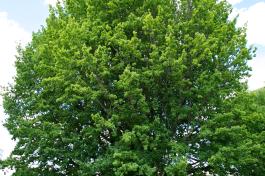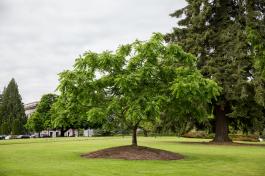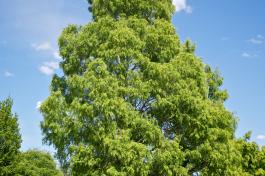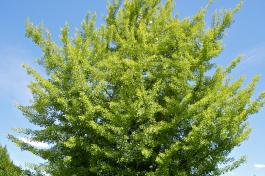American White Elm
Ulmus americana
Learn about the American white elm including when and why it was planted, how to identify it, and where to find it on campus.
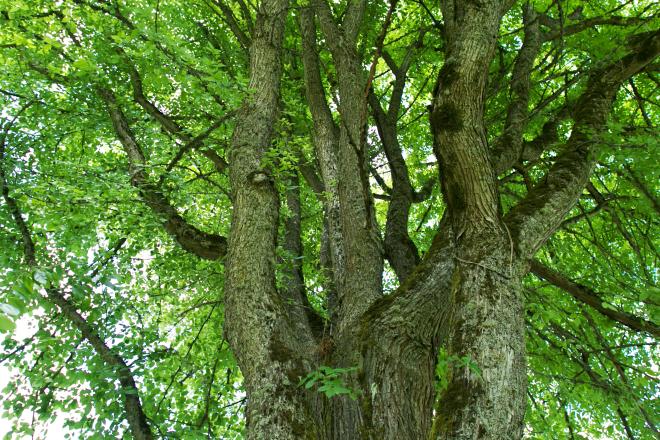
Tree Facts
Traits
- Oval- to football-shaped leaves with serrated edges that are between 1 to 5 inches long
- Small green bell-shaped flowers appear in early spring
- Thin, round, and flat helicopter seeds (samara fruit) that are between 3/8" to 1/2" long
- Gray, cracked bark that flakes or peels into small scaly plates
- Susceptible to Dutch elm disease, aphids, and the elm leaf beetle
Native Range
- Central North America
- Eastern North America
Story of the Tree
This historic American white elm is on the lawn by 11th Avenue, opposite the Helen Sommers Building.
This elm came from a cutting of the tree that, according to legend, stood over George Washington when he took command of the Continental Army in Massachusetts on July 3, 1775. After Washington was elected first president, the elm became a celebrated attraction.
In 1896, a University of Washington alumnus doing graduate study in Cambridge obtained a rooted cutting of the famous elm, which was sent to Professor Edmund Meany at the University of Washington. This rooted cutting was planted, and more cuttings were taken from it.
This specific elm tree is one such cutting. Commemorating the president our state is named after, this tree was planted on February 18, 1932, which would have been George Washington’s 200th birthday.
To the west is a small elm planted from a 1979 cutting.


